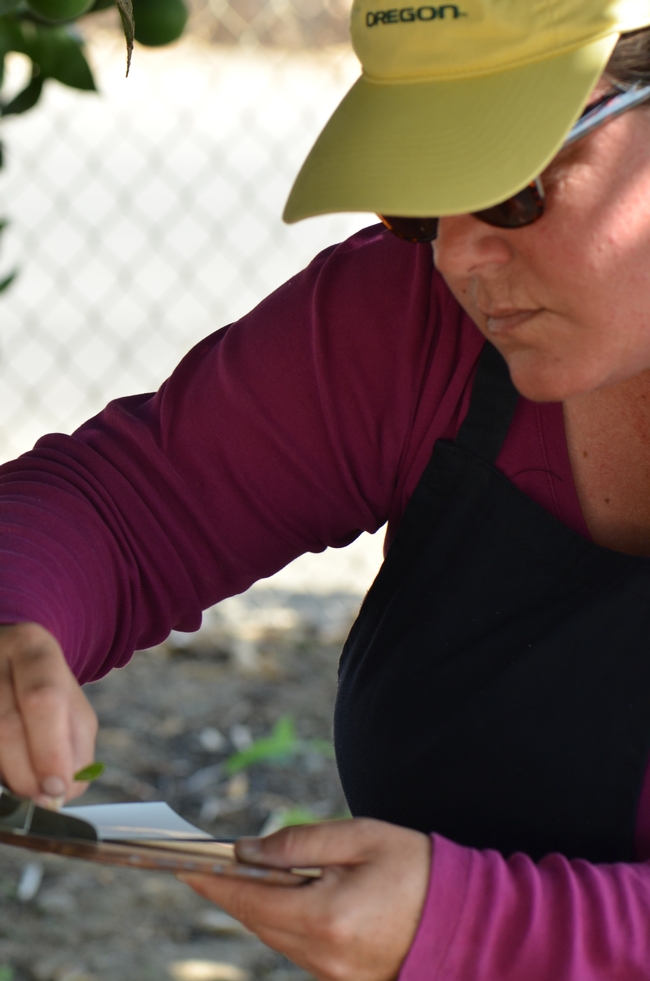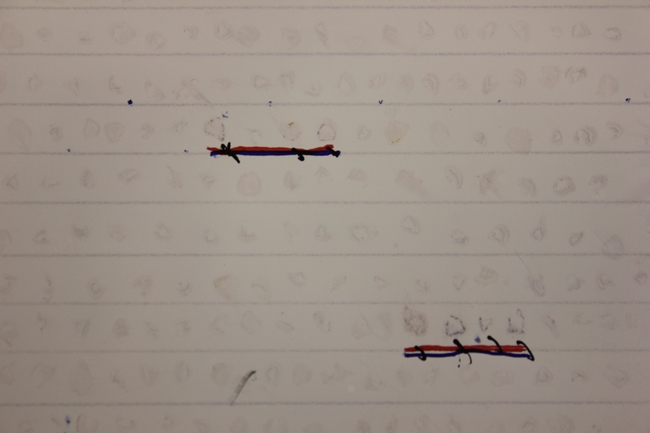Each year the Lindcove Research and Extension Center tests every field tree for citrus tristeza virus (CTV), with funding from the California Citrus Nursery Board. This plant virus can be found in citrus trees worldwide, and certain strains of CTV can kill trees while other strains cause mild or no disease symptoms. The virus is phloem-limited, and transmitted by winged forms of cotton aphids, which are common at certain times of the year in the San Joaquin Valley. No cure is known for trees diseased by CTV, and those found to be infected at the Center are removed in order to protect the research plantings from infection.
The Center utilizes the direct tissue blot immunoassay (DTBIA) method of sampling, and Therese Kapaun processes the blots in-house using DAS-ELISA. Briefly, four leaf samples are taken from each tree, and the leaf stems are snipped off at a cross section and quickly pressed onto a nitrocellulose membrane. Leaves are discarded on the ground, and the sampling moves to the next tree. The pressings from about 150 trees can typically fit onto a membrane the size of a 3" X 5" card. Membranes can be stored for weeks in a refrigerator if necessary, and laboratory processing can be performed in batches, taking less than four hours per batch. Results can be dramatic, as blots containing the virus will stain a dark purple color, and are usually visible without magnification.
A five minute training video of our CTV field testing methods can be viewed on YouTube by clicking here.

